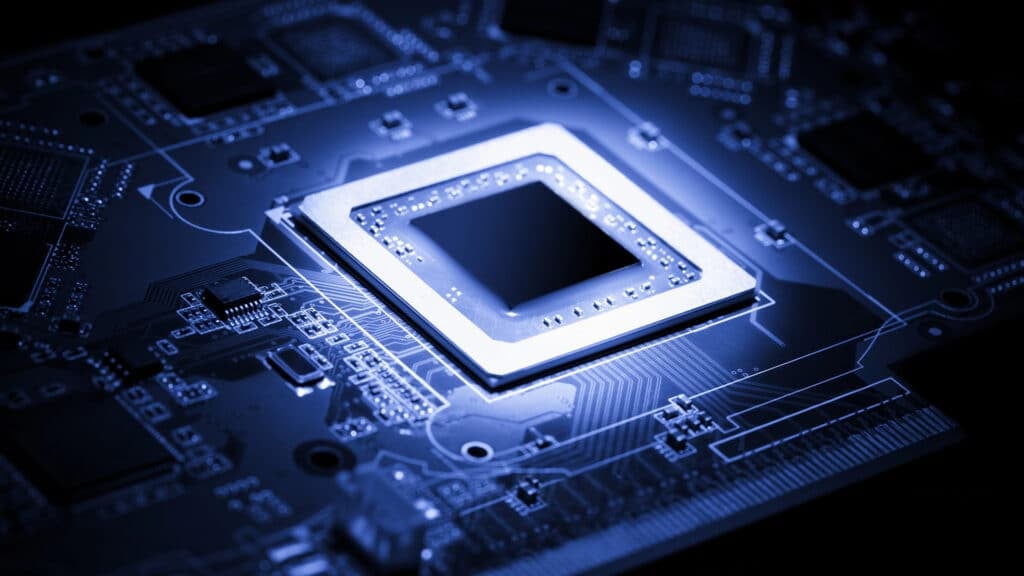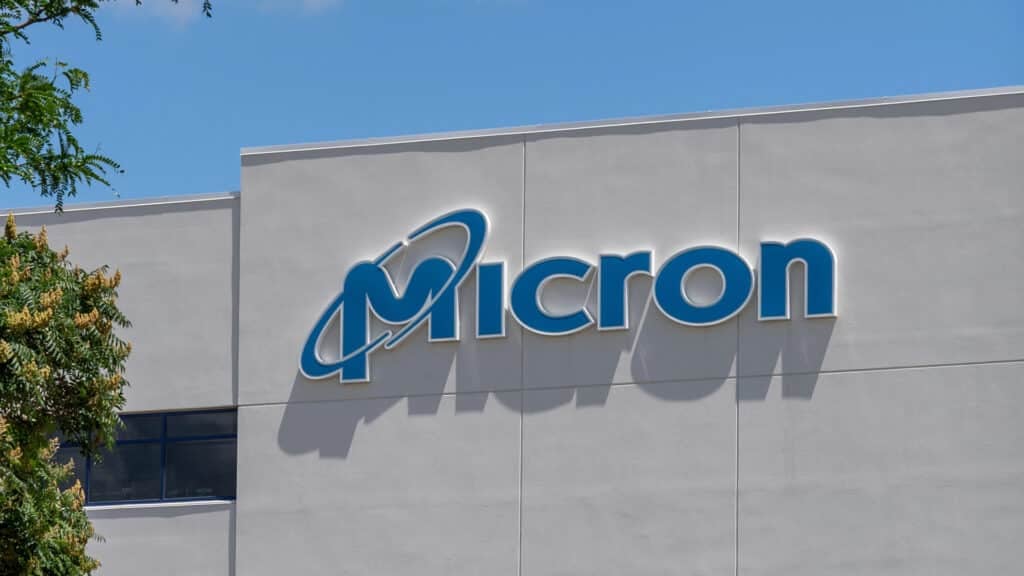On this episode of the Six Five on the Road, hosts David Nicholson and Lisa Martin are joined by Dell’s Omar Rawashdeh, PowerEdge Product Planner, for a conversation on Dell’s latest announcements at DTW regarding their PowerEdge Servers.
Their discussion covers:
- The latest PowerEdge Servers Dell is announcing at DTW
- Key highlights about the new T160/R260 PE servers
- The key use cases/workloads for these servers
- Availability dates for the T160/R260/R660/R770 servers
Learn more at Dell.
Watch the video below, and be sure to subscribe to our YouTube channel, so you never miss an episode.
Or listen to the audio here:
Disclaimer: The Six Five Webcast is for information and entertainment purposes only. Over the course of this webcast, we may talk about companies that are publicly traded and we may even reference that fact and their equity share price, but please do not take anything that we say as a recommendation about what you should do with your investment dollars. We are not investment advisors and we ask that you do not treat us as such.
TRANSCRIPT:
Lisa Martin: Hey, everyone. Welcome back to Six Five On The Road from Las Vegas, baby. It’s our coverage of Dell Technologies World 2024, the AI edition. Lisa Martin here with Dave Nicholson. Dave, we have been talking for a couple of days now with Dell, it’s ecosystem of partners, which continues to impress me with its strength and its depth. We’re going to be talking with Omar Rawashdeh next, PowerEdge product planning manager at Dell Technologies, because there’s some news coming out that we want to uncover. Omar, welcome to the program. Great to have you.
Omar Rawashdeh: Thank you, Lisa, for having me, and Dave. Great to be here. I’m very excited about announcing the 16G entry 1 Socket rack and tower.
Lisa Martin: Yes.
Omar Rawashdeh: Namely, the T160 and R260.
Lisa Martin: Let’s unpack that. The T160, the R260. Tell us about the highlights of each and the what’s in it for me as a customer.
Omar Rawashdeh: Great question. The T160, R260 are all about compact form factor, affordable price point and the right level of performance. Both T160, R260 offer 100% CPU performance compared to their predecessors, or the previous gen. They offer 50% latency reduction, as well as good reduction around the physical footprint.
Lisa Martin: I’m thinking a sustainability angle. We know we talk with so many Dell customers and Dell Technologies executive leadership team itself in terms of sustainability is so incredibly important to your customers, your partners. And that a lot of customers say, “We only want to work with organizations that are actually going to help us achieve our sustainability initiatives.” What is that factor, the sustainability factor in these advancements from Dell’s lens?
Omar Rawashdeh: Great point. For the T160, as I mentioned, it is a small form factor, almost 50% smaller than predecessor.
Dave Nicholson: Like a 1U standard rack or what is it? What is it?
Omar Rawashdeh: Actually, it’s a 3U small depth tower.
Dave Nicholson: Okay.
Omar Rawashdeh: That’s around 17 liter.
Dave Nicholson: Oh, okay.
Omar Rawashdeh: It’s 42% smaller in size than its predecessor. To hit on the sustainability aspect, it’s a very sustainable design using sustainable material. Prime example, the slick, unpainted chassis design that uses a plated recycled steel. Plus, more sustainability material using less adhesive in the tagging, and much, much more.
Lisa Martin: That’s outstanding because, like I mentioned before, we talk to so many customers who say, “It’s an imperative for us as a business,” whether they’re doing an RFP or whatnot, to work with organizations that will help them on their sustainability objectives. Talk a little bit about the target market. Who are your target customers for these new advanced servers?
Omar Rawashdeh: Great question. I think, given the nature of these entry enterprise servers and the fact that, with this generation, we made them more smaller form factor to address the use cases remote office, branch office. Also, unrecognized near edge use case in deployments. Prime example, retail segment, manufacturer segment, your famous restaurant or auto parts that will leverage these servers for their enterprise general purpose use cases, be it data processing, virtualization or what have you.
Dave Nicholson: These aren’t systems that are necessarily designed for the highest demanding, the most demanding workloads on the planet. This is very much in the Dell ethos of fit for function. What do you need at the edge in your dental practice?
Omar Rawashdeh: Exactly.
Dave Nicholson: You don’t need 1000-node AI training cluster.
Omar Rawashdeh: Definitely.
Dave Nicholson: What do they look like in terms of typical configurations? What type of storage goes into these systems?
Omar Rawashdeh: Great question. As I mentioned, these are entry, affordable enterprise servers with various form factors. The T160 is a tower form factor that can be placed vertically or stacked horizontally with multiple nodes. The R260 is a 1U rack that we made shorter, in terms of depth, less than 17-inch, 24% less than its predecessor. To your point in terms of use cases, these two servers use the latest Intel Xeon E2400 processors with up to eight cores, offering customers 100% CPU performance boost from previous generation. 50% latency reduction, 23% power efficiency than the previous generation. Customers can use it for their virtualization, data processing, file print, general purpose workload.
Dave Nicholson: It is interesting because this is tagged as AI edition, but it’s good to know that, I think I used the term adults in the room, people are still realizing that there’s a whole lot of IT going on outside of the AI revolution. What’s the typical buying pattern or path to market for these devices? Are people going to Dell.com, and configuring, and having them delivered? Are they going through partner VARS through your channel? What does that look like typically?
Omar Rawashdeh: Great question. Both.
Dave Nicholson: Okay.
Omar Rawashdeh: Customers who want to buy a few out of these servers, they can easily go to Dell.com, configures these servers and have them shipped to their preferred location. For customers that want to work with sellers, channel partners, they also can do so and we offer programs through our channel partners for these servers.
Lisa Martin: From what I understood doing some research, the T160 is really ideal for organizations across verticals that are looking to really do realtime data processing at near-edge installations. You mentioned a couple of verticals. You mentioned retail, you mentioned manufacturing. But you also mentioned, from price point, entry level. Talk a little bit about the T160 and its target, in terms of helping organizations at the end in near realtime.
Omar Rawashdeh: Great point. As I mentioned, these are entry enterprise servers with a lot of enterprise features around security, resiliency, iDRAC that enterprise customers would like to leverage. For price point, the sweet spot is around less than 3K for these servers. For the T160 and R260, one thing that we introduced given the deployment use cases and workload, we now offer a filtered bezel that will protect the inner hardware component of the server from dust and grease.
Lisa Martin: Different environments, harsh environments.
Omar Rawashdeh: Harsh environment, exactly. Be it dust, grease, hair, lint or what have you. This will protect these inner components, ensuring unobstructed airflow for these servers that will result in a better performance, power and acoustic experience.
Dave Nicholson: When you say entry level enterprise, I’m imagining that this market segment consists of some small businesses who might seriously be thinking about running their business on one of their children’s redeployed Alienware gaming computers.
Omar Rawashdeh: Yeah.
Dave Nicholson: But your pitch would be, “No, no, no, no, no. This is your business. We can meet your business requirements with a legitimate enterprise class server.” But you said for starting in the neighborhood of $3000. You’re bridging that divide between the PC and the enterprise there. Is there conversation about AI at the edge, with regard to the products that you manage and plan for? Or is that more of AI on the edge in an AI enable personal computer interacting with your servers? Is there a place for that AI on the edge in your products? Is that part of the strategy or not?
Omar Rawashdeh: No, that’s a great point. Thanks for the question. Again, given these T160 and R260 are a part of the compact, entry, affordable 1 Socket servers, we couldn’t fit the enterprise GPUs while still maintaining the cooling and thermal constraints for the system. On the other hand, we have another two servers that we launched almost six ago, in December, that are almost the second prize tier, or a better option for our customers that would like a higher level of availability, scalability and resiliency. These two servers, namely the T360 and R360, offer GPU options for data inferencing and AI workloads for entry servers.
Dave Nicholson: Fit for function.
Omar Rawashdeh: Correct.
Dave Nicholson: Which is what Dell has become very well known for over the decades. 40 years now, I understand?
Lisa Martin: 40.
Dave Nicholson: Maybe 39 years ago, Dell wasn’t known for all of this as much as it is today. But the point is, the ability to deliver fit for function. Not everyone needs those things. Not everyone needs AI at the edge for what they’re doing with your entry level systems, right?
Omar Rawashdeh: Correct.
Lisa Martin: But on that point, to your point, what’s the appetite for organizations from an AI perspective? As we heard during Michael Dell’s keynote, it’s Dell Tech World ’24, the AI edition. He talked about the five different AI PCs. He talked about what all is happening at servers and storage, with compute, and with all of the ambitions Dell has for AI. What are those conversations like with some of the customers that are targets for these servers? In terms of knowing that, when you hear a Jeff Clark or a Michael Dell talk about, “If you’re not on the AI train already, you’re missing out.”
Omar Rawashdeh: Yeah, that’s a great question. I think it’s a huge opportunity. A lot of customers are trying to tap into the AI, and all the use cases and workloads it brings. We are continually looking into affordable AI solution in this segment and will be adding more options, even post RTS, that will cater to our customer needs around AI and AI use cases for the entry servers.
Lisa Martin: I think we definitely know that about Dell, in terms of yesterday, when Michael Dell was on stage talking about, “We have big ears,” and they showed it like here, in terms of the customer listening. But it’s not just about listening to customers, it’s about taking that information into consideration, testing, retesting, deploying. That seems to be at the core of Dell’s DNA to me.
Omar Rawashdeh: For sure.
Lisa Martin: From the years I’ve been covering Dell Technologies.
Dave Nicholson: Yeah. But if I go into Home Depot and all I need is a hammer, I don’t need somebody telling me about some super complicated, next gen technological thing. It’s like, “Look, I need a hammer.” Well, here you go. Dell will give you the hammer for the workloads that is appropriate for the job.
Lisa Martin: I know you. Don’t you want to know the next level of the hammer evolution?
Dave Nicholson: Yeah, of course you do. But you have a retail business, you have 10 stores and you need compute capability and storage onsite for latency reasons or whatever. Maybe you got some security cameras running, whatever it is. It doesn’t become a chasing the shiny object game. It becomes very much block and tackle. It’ll be very interesting to see as times goes by what percentage of Dell’s revenue is in that what we sometimes call meat and potatoes part of the market. That certainly can’t be abandoned as we chase the shiny object.
Lisa Martin: In our last couple of minutes, Omar, what’s been some of the feedback from the customers and the partners that you’ve had a chance to talk to about some of these announcements? I imagine they’re excited, they see opportunity. But what’s been that circle of feedback from your perspective?
Omar Rawashdeh: Great, great question. The response has been very positive so far. I met with a good number of customers and partners that are very excited to see these entry, compact servers, the 1 Socket rack and tower T160 and the R260. They are very happy to see that we were able to incorporate the voice of the customer and get these designs into our 16 generation. They seem very excited that also, we’re able to hit on the sustainability element that you highlighted earlier. So far, it’s been very positive and overwhelming good response.
Lisa Martin: Excellent. Pardon me if you mentioned this and I missed it. Availability?
Omar Rawashdeh: For sure. These are available to enterprise-
Lisa Martin: In terms of timing.
Dave Nicholson: When can you get them?
Omar Rawashdeh: We announced these servers May 14th. They will be available to order May 29th.
Dave Nicholson: Okay.
Lisa Martin: In a couple of days. Omar, thank you so much for coming on the program and sharing what’s new with PowerEdge from a product planning perspective. What’s in it for customers, what you’re delivering to them and how you’re enabling them to really foundationally modernize for the next phases of their evolution. We so appreciate your insight.
Omar Rawashdeh: Thank you for having me. It’s my pleasure.
Lisa Martin: Our pleasure as well.
Omar Rawashdeh: Thank you.
Lisa Martin: For our guest and for Dave Nicholson, I’m Lisa Martin, you’re watching Six Five on the Road from Vegas, baby. It’s Dell Tech World 2024, the AI edition. Dave and I will be right back with our next guest, so stick around.
Author Information
David Nicholson is Chief Research Officer at The Futurum Group, a host and contributor for Six Five Media, and an Instructor and Success Coach at Wharton’s CTO and Digital Transformation academies, out of the University of Pennsylvania’s Wharton School of Business’s Arresty Institute for Executive Education.
David interprets the world of Information Technology from the perspective of a Chief Technology Officer mindset, answering the question, “How is the latest technology best leveraged in service of an organization’s mission?” This is the subject of much of his advisory work with clients, as well as his academic focus.
Prior to joining The Futurum Group, David held technical leadership positions at EMC, Oracle, and Dell. He is also the founder of DNA Consulting, providing actionable insights to a wide variety of clients seeking to better understand the intersection of technology and business.
Lisa Martin is a technology correspondent and former NASA scientist who has made a significant impact in the tech industry. After earning a masters in cell and molecular biology, she worked on high-profile NASA projects that flew in space before further exploring her artistic side as a tech storyteller. As a respected marketer and broadcaster, she's interviewed industry giants and thought leaders like Michael Dell, Pat Gelsinger, Suze Orman and Deepak Chopra, as she has a talent for making complex technical concepts accessible to both insiders and laypeople. With her unique blend of science, marketing, and broadcasting experience, Lisa provides insightful analysis on the latest tech trends and innovations. Today, she's a prominent figure in the tech media landscape, appearing on platforms like "The Watch List" and iHeartRadio, sharing her expertise and passion for science and technology with a wide audience.









